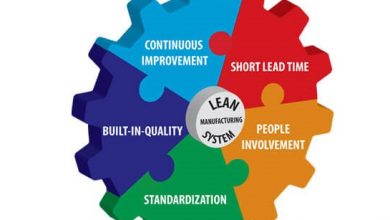What are organizational values importance benefits and application
Organizational values
In a company, organizational values represent a set of fundamental beliefs for the business. Furthermore, they represent the pillars of the organizational culture . The main characteristics of an organization’s values are:
- guide attitudes, behaviors , habits, decisions and internal policies;
- they function as guiding principles that guide the business towards the desired goals;
- they are key to building the identity that the company wants to have in front of the competition, with its public and with its employees;
- are the particulars that make a business unique in the market.
Some companies confuse business objectives with organizational values, but they are different concepts. Objectives are the qualitative and quantitative results that the organization wants to achieve.
Values, on the other hand, are the principles adopted in this process, that is, they are what motivates the existence of an organization, its raison d’être .
Organizational values are defined by people management in a set of 5 to 7 phrases that symbolize the company’s position in society. Therefore, they must be established after the definition of the mission, vision and short, medium and long term objectives.
With regard to employees, organizational values play the role of creating strong harmony. In this condition, the trust and commitment between the company and professionals is strengthened.
How important are organizational values?
In addition to cementing a company’s identity and helping to be recognized by its target audience, organizational values also ensure that efforts to achieve goals are well-directed .
Thus, all decisions, direct or indirect, taken by leaders and managers, must necessarily be linked to the set of moral and ethical beliefs that the company defines.
Another positive point is the engagement of employees. By agreeing with the organization’s values, they are more committed to the results. After all, there is identification between the parties.
In addition, the company’s principles also positively impact the organizational climate , as the teams perceive that everyone is aligned in the execution of processes and in meeting expectations. In this way, there is more productivity and talent retention is strengthened.
What are the benefits?
Establishing solid and concrete organizational values is important for any company, regardless of its size or segment. Remembering that they show the business guidelines, what the brand stands for and what aspects of the culture are .
With this, the company develops an identity for its brand, as long as it is consistent with the actions of all the factors involved, including products and services.
Another advantage is the positive image that the company transmits beyond its walls. As a result, attracting talent is favored, since a company with solid values attracts professionals who identify themselves.
For recruiters, it is a great advantage, as the selection of candidates is aligned to the needs of the position and the profile of the company.
How to define organizational values?
Following a step by step, it is possible to establish a set of values that truly represent the company’s identity . To do so, they need to guide the behavior of everyone, regardless of sector or hierarchy.
Therefore, it is very important to define them. But it is essential to know how to implement them in the organization. Below, check out some tips.
1-Monitor the performance of leaders
Leaders must be an example for those they lead. Thus, managers who do not fulfill or respect the values they created lose their authority and contaminate the entire corporate environment .
Leaders play a significant role in disseminating the company’s culture and values. Therefore, it is important to monitor their performance to confirm if their attitudes are consistent with what they preach.
2-Make a culture diagnosis
When starting a new business, it is possible that the owner’s booklet will be followed. But over time, the company’s growth and the arrival of new employees, certainly, the values from the beginning may no longer make sense or need to be revised.
Thus, a crucial action is to survey the company’s culture . Also, getting to know the business in depth, understanding how the processes take place and what are the impressions of its members, which can provide a panorama for the beginning of a new culture.
3-Define mission and vision
Before moving on to organizational culture, be clear about the purposes it has and where the business intends to be in the near future . The answer to these questions is the mission and vision defined for the business.
In this sense, the concepts must be objective, summarized and accessible to all employees, customers and other audiences. But like company culture, values may also require updating from time to time.
Whether to adapt to market changes or to contemplate organizational changes, understand that this cannot happen very often, so as not to confuse your internal and external audiences.
4-Be clear about the goals you want to achieve
The objectives and goals for the business must be defined in the short, medium and long term. Furthermore, they need to be aligned with the company’s strategic planning and will serve as guidelines for defining organizational values.
5-Collect feedback from teams
Employees at all levels and departments are sources of information for the company. Especially about values. Therefore, having a communication channel is very important and can help with rich feedbacks .
Here, you can use a traditional suggestion box, an intranet space or a specific email address.
6-Disseminate organizational values
After defining which values are relevant to the company’s culture, be sure to disclose them to employees and leaders . But understand that it is not enough to publish them on murals or on the institutional website.
It is essential that the values are understood by everyone involved in the business, in the same way that the mission and vision are assimilated and applied in daily guidelines. For that, promote endomarketing actions , training and other strategies to give visibility.
How to apply organizational values in HR activities?
Giving visibility to organizational values positively impacts day-to-day HR activities. Among them, the Recruitment and Selection processes, the Performance Assessment and the Climate Survey.
1-Recruitment and selection
After all, is it possible to consider organizational values in recruitment and selection ? The answer is yes. They should be part of the early stages of the process.
In this sense, citing the company’s guiding principles when disclosing vacancies increases the possibility of finding suitable profiles. Remember that hiring the ideal employee for a given position boosts business growth .
Another advantage is that, by knowing the values, the candidate feels connected to the company and will be able to argue better about the reasons for being hired.
2-Performance evaluation
Employee alignment can be tested during performance reviews . With this tool, HR analysts are able to map whether they are included in the professional’s performance and what is the level of alignment between them.
For that, it is essential to elaborate questionnaires where the organizational culture can be evaluated, considering all the aspects that the company defends and believes . If necessary, reinforce the values, in a summarized form, in the questionnaires applied. This is critical to giving employees clarity about what the organization expects of them.
3-Climate research
With the climate surveys, managers are able to map how the organizational environment is based on the perception of employees .
The tool is the main indicator of satisfaction — or dissatisfaction — considering different aspects. Among them, professional development, internal communication, HR policies, applied management models and, what matters most in this article, organizational values.




